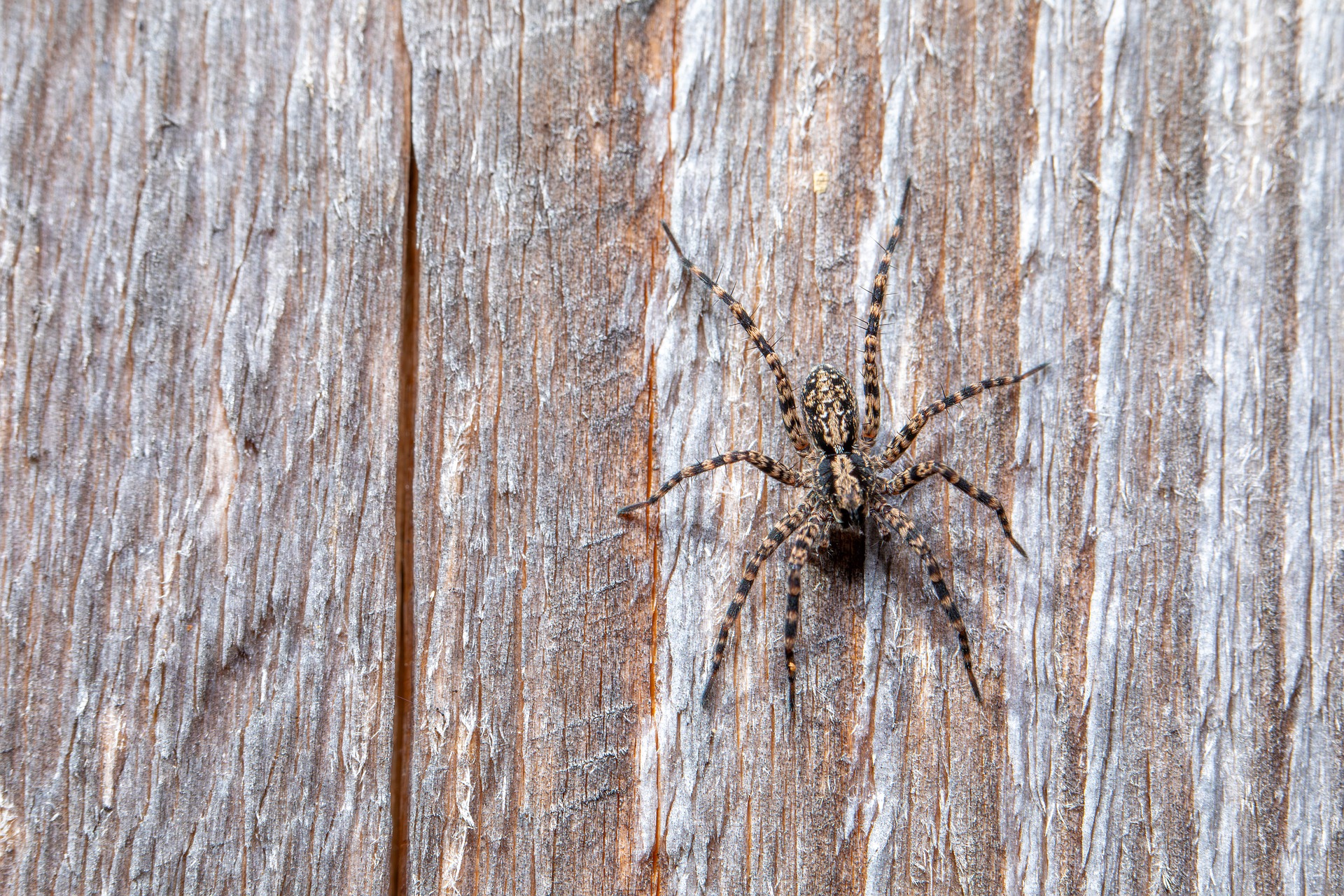Here’s a full overview and detailed description of the Wolf Spider (Acantholycosa lignaria), a fascinating ground-dwelling predator known for its agility and excellent camouflage.
🕷️ Wolf Spider (Acantholycosa lignaria)
Taxonomy
- Kingdom: Animalia
- Phylum: Arthropoda
- Class: Arachnida
- Order: Araneae
- Family: Lycosidae (Wolf spiders)
- Genus: Acantholycosa
- Species: A. lignaria
Scientific name: Acantholycosa lignaria
Common name: Wolf Spider
Identification
The Wolf Spider (Acantholycosa lignaria) is a medium-sized, robust spider with excellent camouflage that blends perfectly into forest floors and rocky habitats.
- Body length: 6–10 mm (males smaller than females)
- Coloration:
- Generally dark brown or gray, often with a mottled or striped pattern.
- Covered with short, dense hairs giving a velvety appearance.
- Markings:
- A lighter median stripe often runs along the cephalothorax.
- Abdomen may display faint chevron-like markings.
- Eyes:
- Eight eyes arranged in three rows — characteristic of wolf spiders.
- The large middle pair of eyes provides excellent night vision and depth perception.
Distribution and Range
- Acantholycosa lignaria* is found across northern and central Europe, northern Asia, and into Siberia.
Range includes:
- Northern and central Europe (including Scandinavia, the Baltics, and Russia)
- Parts of central Asia and the Ural Mountains
- Often in boreal and temperate forest zones
It is particularly common in coniferous and mixed forests with rich ground cover.
Habitat
This species prefers moist, shaded habitats with plenty of leaf litter, stones, and fallen logs for shelter.
Typical habitats:
- Forest floors and mossy areas
- Rocky hillsides
- Woodland edges
- Occasionally in open tundra or alpine meadows
The spider lives and hunts at ground level, using its keen eyesight and speed rather than webs to capture prey.
Behavior
- No web-building: Like all wolf spiders, A. lignaria does not spin webs to catch prey. Instead, it is an active hunter, stalking insects and other small arthropods.
- Diurnal and nocturnal activity: Most active in twilight and at night.
- Ground-dweller: Hides beneath stones, bark, or leaves during the day.
- Excellent eyesight: Uses its large front eyes to detect movement and hunt with precision.
Wolf spiders are solitary and highly territorial, relying on stealth and ambush tactics.
Diet
Feeds primarily on:
- Small insects
- Other spiders
- Ground-dwelling arthropods
The spider pounces on prey, immobilizing it with venomous fangs before feeding.
Life Cycle
1. Mating:
Occurs in late spring to early summer. Males perform leg-waving courtship displays to approach females safely.
2. Egg sac:
The female carries her silken egg sac attached to her spinnerets, a hallmark behavior of wolf spiders.
3. Spiderlings:
After hatching, the spiderlings climb onto their mother’s back and stay there for several days before dispersing to live independently.
4. Lifespan:
Usually 1–2 years.
Adaptations
- Camouflage: Body coloration perfectly matches forest litter or bark, helping it avoid predators.
- Strong legs: Built for fast, agile running and quick attacks.
- Excellent vision: Among the best in spiders, aiding both hunting and navigation.
- Parental care: Females protect eggs and spiderlings, increasing survival rates.
Similar Species
| Species | Distinguishing Features |
|---|---|
| Pardosa amentata | Lighter body with more distinct abdominal patterning. |
| Alopecosa pulverulenta | Larger size and broader cephalothorax. |
| Trochosa terricola | More reddish-brown coloration and different eye proportions. |
Acantholycosa lignaria tends to have a darker, more uniform tone compared to other wolf spiders.
Conservation Status
- IUCN Status: Not Evaluated (but locally common).
- Threats:
- Habitat loss due to forestry and soil disturbance.
- Climate changes affecting forest floor moisture.
Generally stable across its range.
Ecological Role
- Predator: Helps control populations of insects and other small arthropods.
- Prey: Serves as food for birds, small mammals, and amphibians.
- Indicator species: Presence indicates a healthy forest-floor ecosystem.
Key Identification Points
| Feature | Description |
|---|---|
| Scientific Name | Acantholycosa lignaria |
| Common Name | Wolf Spider |
| Family | Lycosidae |
| Body Length | 6–10 mm |
| Coloration | Dark brown or gray, mottled |
| Habitat | Forest floors, under logs and stones |
| Range | Northern and Central Europe, Asia |
| Behavior | Active hunter, ground-dwelling |
| Egg Care | Female carries egg sac |
| Conservation Status | Stable |
Interesting Facts
- Female wolf spiders are known for carrying their egg sacs and protecting young spiderlings — a rare trait in spiders.
- Their reflective eyes can be spotted at night with a flashlight, glowing like tiny emerald dots.
- Despite their fierce appearance, wolf spiders are not dangerous to humans — bites are rare and mild.
Summary
The Wolf Spider (Acantholycosa lignaria) is a skilled and stealthy hunter of Europe’s forests, thriving in leaf litter and mossy ground layers. With its sharp eyesight, swift movements, and remarkable parental care, it plays a vital role in balancing insect populations. This elusive ground spider, perfectly camouflaged against bark and soil, exemplifies the hidden complexity of forest ecosystems.
Views: 146
Subscribe to the newsletter:
